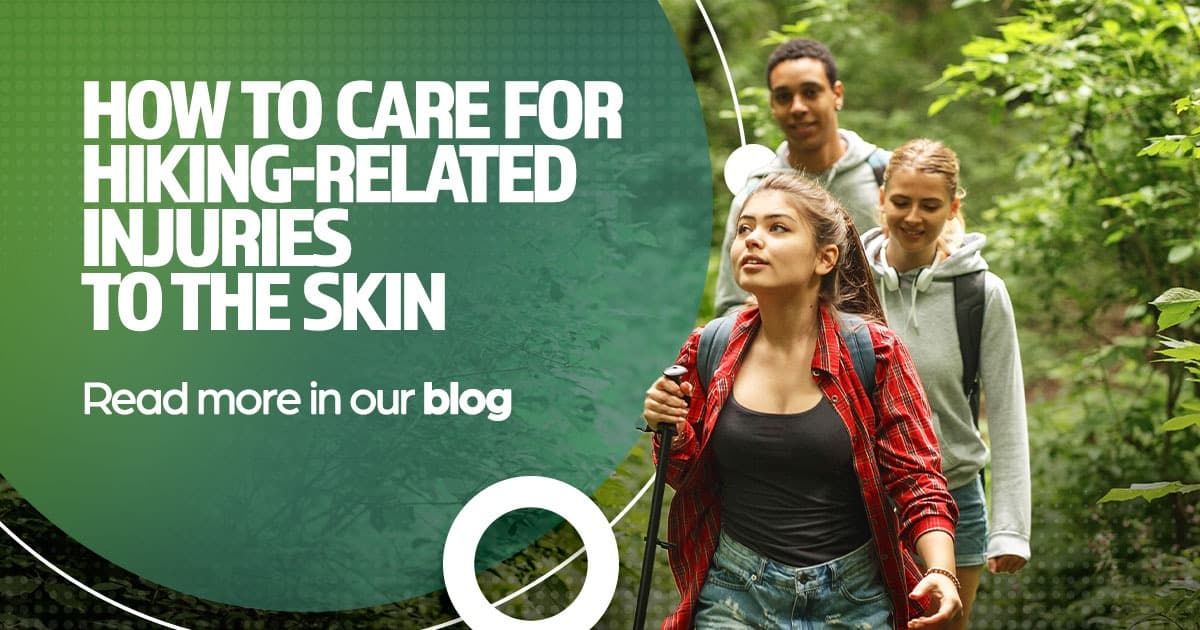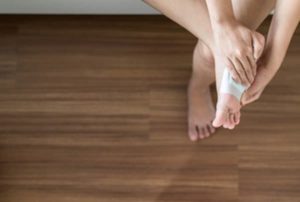In Texas, it’s finally nice enough weather to enjoy the outdoors and explore a new hiking trail or an old favorite. Whether you’re going to Palmetto State Park or brave the South Rim Trail at Big Bend, you should take all necessary precautions first. Injuries on the trail are never fun. We have some first aid kit must-haves and instructions on how to care for hiking-related injuries to the skin.
Hiking Injuries and Your First Aid Kit
Even the most seasoned hikers can injure themselves on the trail. The top hiking injuries range from cuts and scrapes to broken bones and hypothermia. While a first aid kit can’t solve everything, it can be more than handy for mild to moderate snafus. Here are some of the items The American Hiking Society recommends you have in your first aid kit:
- Moleskin and athletic tape
- Various adhesive bandages of varying size
- A small roll of sterile gauze
- Several pairs of latex or nitrile gloves
- Alcohol-based sanitizing gel
- Antiseptic ointment, to be used only after cleaning a wound
- After Bite® for insect bites and skin care treatment for poisonous plants
- GlacierGel® or liquid bandages
Common Skin Injuries on the Trail and Care Tips
Blisters, minor cuts and scrapes, and burns are some of the most common skin injuries you can get while hiking. It may seem most of these just come with the territory, but here are care instructions and prevention tips:
- Blisters:
- Care Tips
- Cover the blister loosely with a bandage so that the middle of the bandage is a little raised.
- Use padding. To protect blisters on the bottom of your feet, use padding. Use gauze or other sterile dressing by cutting it into a donut shape with a middle hole and placing it around the blister. Then, cover the padding and blister with a bandage.
- Prevention
- You can avoid blisters by preventing chafing of the skin. Wear loose-fitting, moisture-wicking clothing and shoes that fit.
- Consider using adhesive moleskin or other soft bandages to help with friction areas where the skin rubs together. You can also apply powder or petroleum jelly to help reduce friction.
- Care Tips
- Minor Cuts and Scrapes:
- Care Tips
- First, clean your hands and then the area with mild soap to remove dirt and debris from minor cuts and scrapes. Apply petroleum jelly to keep the wound moist and prevent bacteria from entering. Re-apply daily until the area is healed and cover with a sterile bandage.
- Prevention
- Show extra caution in areas with uneven or slippery ground. Cover skin with clothing in heavily wooded areas to protect against branches and other foliage.
- Care Tips
- Sunburns:
- Care Tips
- Apply a cool compress several times a day to help ease any discomfort. Use a moisturizer while skin is damp that contains aloe vera or is made for sunburn, and wear tightly woven fabrics to protect skin while outdoors.
- Prevention
- Use a broad-spectrum UVA/UVB sunscreen daily with an SPF of 30 or higher. Re-apply as often as directed. Avoid being in the direct sun during peak exposure times (10 am-4 pm). Seek shaded areas and wear protective clothing, hat, and sunglasses when outside for extended periods.
- Care Tips
Sometimes Trail Injuries to the Skin Need an Expert.
The exhilaration and lifetime memories of hiking can be endless. If the hiking trip is over, but you’re still battling with the effects on your skin, it’s time to tap in the experts. Contact Texas Dermatology today at (210) 829-5180 or book an appointment through our online portal
Sources:
https://www.aad.org/public/everyday-care/injured-skin/burns/prevent-treat-blisters
https://www.aad.org/public/everyday-care/injured-skin/burns/treat-minor-cuts











